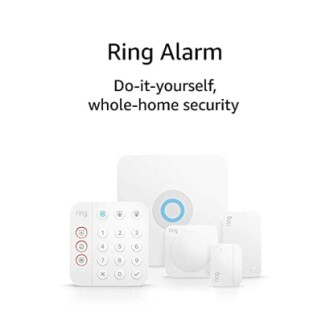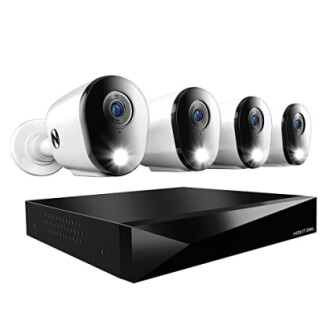
Smart Home Security
How to Choose the Right Smart Home Alarm System
- Understanding the different types of alarm systems.
- Key features to consider, such as connectivity and monitoring options.
- Installation process and integration with existing systems.
- Top product recommendations for various needs.
When it comes to ensuring the safety and security of your home, choosing the right smart home alarm system is crucial. This comprehensive guide will help you navigate the various options available to you, focusing on key features, installation tips, and how to integrate these systems into your everyday life.
Understanding the Types of Smart Home Alarm Systems
Smart home alarm systems come in various forms, each designed to meet specific needs and preferences. Here are the main types:
- Wired Systems: These systems are connected directly to your home's electrical system, providing a stable connection. They are suitable for larger homes where installation can be done easily.
- Wireless Systems: Easier to install and perfect for renters, wireless systems use your home’s Wi-Fi network to connect. These are often more flexible and can be expanded as needed.
- Self-Monitoring Systems: These allow homeowners to receive alerts directly on their smartphones without requiring a professional monitoring service.
- Professional Monitoring Systems: These drive peace of mind by offering 24/7 monitoring features that notify emergency responders automatically when alarm triggers occur.
Key Features to Consider
With different types of systems available, it's essential to consider the key features that will determine the effectiveness and usability of your home alarm system. Here are the most important aspects:
| Feature | Description |
|---|---|
| Smartphone Compatibility | Make sure the system provides access to an app for easy monitoring and control from your mobile device. |
| Integration with Other Devices | Your alarm system should integrate with other smart home devices like cameras, lights, and locks for cohesive security management. |
| Alert Options | Look for systems that send instant notifications for detected motion or breaches via your smartphone. |
| Video Capabilities | Choose systems that offer video monitoring to provide visual verification of incidents. |
| Battery Backup | Ensure your system works during power outages with battery backup options to keep you protected 24/7. |
Installation Tips
Installing a smart home alarm system can be straightforward if you follow these guidelines:
- Choose appropriate locations for your cameras and sensors to cover all entry points.
- Follow manufacturer installation guides for a smooth setup process.
- Consider professional installation if you are uncomfortable with DIY methods.
- Test your system thoroughly after installation to ensure all components are working correctly.
Integration with Other Smart Home Devices
One of the main benefits of modern alarm systems is their ability to integrate with other smart home devices. Here are some ways to bring everything together:
- Use smart locks that can be controlled through your alarm system, allowing for seamless entry.
- Link your security cameras to your alarm system to have a complete view of your property.
- Set up automatic lights that can turn on if motion is detected when you’re away.
Recommended Products
Now, let's take a look at some top recommendations for smart home alarm systems:
Ring Alarm 5-Piece Kit
A complete home security solution, this kit includes a Base Station, Keypad, Contact Sensor, Motion Detector, and Range Extender. Perfect for condos and apartments.
Explore NowNight Owl 2-Way Audio 12 Channel DVR System
This system offers 2K HD video quality with 4 deterrent cameras, allowing for reliable video surveillance while enabling two-way audio communication.
See ProductPros and Cons of Smart Home Alarm Systems
Pros
- Enhanced security with real-time alerts and monitoring.
- Flexible configurations and customizable options.
- Ease of integration with other smart home features.
Cons
- Monthly monitoring fees may add up.
- Dependency on stable internet connectivity for full functionality.
- Initial setup costs can be higher depending on the system features.
Conclusion
Selecting the right smart home alarm system ensures the safety of your home while providing peace of mind. Assess your individual needs, consider your budget, and choose a system that can integrate seamlessly with your other smart devices. By doing so, you'll create a comprehensive security setup that effectively protects your home and loved ones.
For more information on specific types of systems, check out our resources on alarm systems, smart locks, and security lighting systems.

